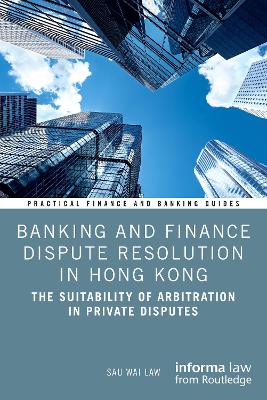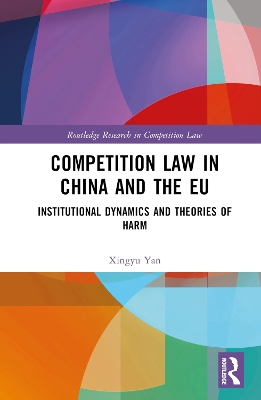Legal History of the European Banking Union
 portes grátis
portes grátis
Legal History of the European Banking Union
How European Law Led to the Supranational Integration of the Single Financial Market
Teixeira, Dr Pedro Gustavo
Bloomsbury Publishing PLC
07/2022
288
Mole
Inglês
9781509942596
15 a 20 dias
Descrição não disponível.
Introduction
I. Purpose
II. Explaining the Creation of the Banking Union
III. Explaining Legal Change in European Integration
IV. Overview
1. Integration through Harmonisation (1973-1984)
I. Introduction
II. Origins
III. Starting a European Financial Market
IV. The Principle of Non-Discrimination and the Harmonisation of National Laws
V. The Introduction of the Principle of Home-Country Control
VI. The Introduction of Committees of National Authorities
VII. The Limited Progress in Financial Integration
VIII. Conclusion: The Beginnings of a 'Banking Union'
2. Integration through Competition (1985-1997)
I. Introduction
II. The Emerging Regulation of International Finance
III. The Framework for Completing the Internal Market by 1992
IV. The Liberalisation of Capital Movements
V. The Single Passport for Financial Services
VI. The 'General Good' Exception
VII. The Minimum Harmonisation of National Laws
VIII. The Inclusion of National Authorities in the Single Passport Framework
IX. The Success and Failure of 'Integration through Competition'
X. Conclusion: The Perpetual Integration of the European Financial Market
3. Integration through Governance (1998-2007)
I. Introduction
II. The Governance Model of Regulation
III. The Multilevel Governance of Global Finance
IV. The Economic and Monetary Union
V. The 1999 Financial Services Action Plan
VI. The Multilevel Governance of the European Financial Market: The 'Lamfalussy Framework'
VII. The Expansion of Home-Country Control to Financial Services Groups
VIII. Competition Policy in the Single Financial Market
IX. Crisis Prevention in the Single Financial Market
X. The Democratic Legitimacy of Governance Structures: Transparency and Accountability
XI. The Consequences of 'Integration through Governance'
XII. Conclusion: Creating the Conditions for a 'Banking Union'
4. (Dis-)Integration through Crisis (2008-2012)
I. Introduction
II. The Financial Crisis Unfolds in Europe
III. The Renationalisation of the Single Financial Market
IV. The Global Responses to the Financial Crisis
V. Rescuing the Single Financial Market
VI. Replacing Committees with Agencies: The European Supervisory Authorities
VII. Introducing Financial Stability into Integration: The European Systemic Risk Board
VIII. From the Single Passport to the Single Rulebook
IX. The Democratic Legitimacy of Financial Integration
X. Conclusion: The Legal Causes and Consequences of the Financial Crisis
5. Integration through Centralisation: The Banking Union (2013-... )
I. Introduction
II. The Sovereign Debt Crisis in the Euro Area
III. The Build-up to the Banking Union
IV. 'Towards a Genuine Economic and Monetary Union'
V. The First Pillar of the Banking Union: The Single Supervisory Mechanism
VI. The Second Pillar of the Banking Union: The Single Resolution Mechanism
VII. The Third Pillar of the Banking Union: A European Deposit Insurance Scheme
VIII. The Democratic Legitimacy of the Banking Union
IX. The Differentiation Process of the Banking Union
X. Conclusion: The Completion of Legal Integration?
6. Unlocking the Past and Future of the Banking Union
I. Introduction
II. Explaining the Creation of the Banking Union: The Endpoint of Supranational Integration through Law
III. Explaining the Legal Change Leading to the Banking Union
IV. Explaining the Acceleration of Integration Towards the Banking Union: The Spillover of the Monetary Union
V. Uncovering the Parallel Evolution of Global Standard-Setting
VI. Understanding the Democratic Legitimacy Problem
VII. The End of the Legal History of the Single Market? Determining the Future of the Banking Union
VIII. Conclusion: The Banking Union and European Integration
I. Purpose
II. Explaining the Creation of the Banking Union
III. Explaining Legal Change in European Integration
IV. Overview
1. Integration through Harmonisation (1973-1984)
I. Introduction
II. Origins
III. Starting a European Financial Market
IV. The Principle of Non-Discrimination and the Harmonisation of National Laws
V. The Introduction of the Principle of Home-Country Control
VI. The Introduction of Committees of National Authorities
VII. The Limited Progress in Financial Integration
VIII. Conclusion: The Beginnings of a 'Banking Union'
2. Integration through Competition (1985-1997)
I. Introduction
II. The Emerging Regulation of International Finance
III. The Framework for Completing the Internal Market by 1992
IV. The Liberalisation of Capital Movements
V. The Single Passport for Financial Services
VI. The 'General Good' Exception
VII. The Minimum Harmonisation of National Laws
VIII. The Inclusion of National Authorities in the Single Passport Framework
IX. The Success and Failure of 'Integration through Competition'
X. Conclusion: The Perpetual Integration of the European Financial Market
3. Integration through Governance (1998-2007)
I. Introduction
II. The Governance Model of Regulation
III. The Multilevel Governance of Global Finance
IV. The Economic and Monetary Union
V. The 1999 Financial Services Action Plan
VI. The Multilevel Governance of the European Financial Market: The 'Lamfalussy Framework'
VII. The Expansion of Home-Country Control to Financial Services Groups
VIII. Competition Policy in the Single Financial Market
IX. Crisis Prevention in the Single Financial Market
X. The Democratic Legitimacy of Governance Structures: Transparency and Accountability
XI. The Consequences of 'Integration through Governance'
XII. Conclusion: Creating the Conditions for a 'Banking Union'
4. (Dis-)Integration through Crisis (2008-2012)
I. Introduction
II. The Financial Crisis Unfolds in Europe
III. The Renationalisation of the Single Financial Market
IV. The Global Responses to the Financial Crisis
V. Rescuing the Single Financial Market
VI. Replacing Committees with Agencies: The European Supervisory Authorities
VII. Introducing Financial Stability into Integration: The European Systemic Risk Board
VIII. From the Single Passport to the Single Rulebook
IX. The Democratic Legitimacy of Financial Integration
X. Conclusion: The Legal Causes and Consequences of the Financial Crisis
5. Integration through Centralisation: The Banking Union (2013-... )
I. Introduction
II. The Sovereign Debt Crisis in the Euro Area
III. The Build-up to the Banking Union
IV. 'Towards a Genuine Economic and Monetary Union'
V. The First Pillar of the Banking Union: The Single Supervisory Mechanism
VI. The Second Pillar of the Banking Union: The Single Resolution Mechanism
VII. The Third Pillar of the Banking Union: A European Deposit Insurance Scheme
VIII. The Democratic Legitimacy of the Banking Union
IX. The Differentiation Process of the Banking Union
X. Conclusion: The Completion of Legal Integration?
6. Unlocking the Past and Future of the Banking Union
I. Introduction
II. Explaining the Creation of the Banking Union: The Endpoint of Supranational Integration through Law
III. Explaining the Legal Change Leading to the Banking Union
IV. Explaining the Acceleration of Integration Towards the Banking Union: The Spillover of the Monetary Union
V. Uncovering the Parallel Evolution of Global Standard-Setting
VI. Understanding the Democratic Legitimacy Problem
VII. The End of the Legal History of the Single Market? Determining the Future of the Banking Union
VIII. Conclusion: The Banking Union and European Integration
Este título pertence ao(s) assunto(s) indicados(s). Para ver outros títulos clique no assunto desejado.
Introduction
I. Purpose
II. Explaining the Creation of the Banking Union
III. Explaining Legal Change in European Integration
IV. Overview
1. Integration through Harmonisation (1973-1984)
I. Introduction
II. Origins
III. Starting a European Financial Market
IV. The Principle of Non-Discrimination and the Harmonisation of National Laws
V. The Introduction of the Principle of Home-Country Control
VI. The Introduction of Committees of National Authorities
VII. The Limited Progress in Financial Integration
VIII. Conclusion: The Beginnings of a 'Banking Union'
2. Integration through Competition (1985-1997)
I. Introduction
II. The Emerging Regulation of International Finance
III. The Framework for Completing the Internal Market by 1992
IV. The Liberalisation of Capital Movements
V. The Single Passport for Financial Services
VI. The 'General Good' Exception
VII. The Minimum Harmonisation of National Laws
VIII. The Inclusion of National Authorities in the Single Passport Framework
IX. The Success and Failure of 'Integration through Competition'
X. Conclusion: The Perpetual Integration of the European Financial Market
3. Integration through Governance (1998-2007)
I. Introduction
II. The Governance Model of Regulation
III. The Multilevel Governance of Global Finance
IV. The Economic and Monetary Union
V. The 1999 Financial Services Action Plan
VI. The Multilevel Governance of the European Financial Market: The 'Lamfalussy Framework'
VII. The Expansion of Home-Country Control to Financial Services Groups
VIII. Competition Policy in the Single Financial Market
IX. Crisis Prevention in the Single Financial Market
X. The Democratic Legitimacy of Governance Structures: Transparency and Accountability
XI. The Consequences of 'Integration through Governance'
XII. Conclusion: Creating the Conditions for a 'Banking Union'
4. (Dis-)Integration through Crisis (2008-2012)
I. Introduction
II. The Financial Crisis Unfolds in Europe
III. The Renationalisation of the Single Financial Market
IV. The Global Responses to the Financial Crisis
V. Rescuing the Single Financial Market
VI. Replacing Committees with Agencies: The European Supervisory Authorities
VII. Introducing Financial Stability into Integration: The European Systemic Risk Board
VIII. From the Single Passport to the Single Rulebook
IX. The Democratic Legitimacy of Financial Integration
X. Conclusion: The Legal Causes and Consequences of the Financial Crisis
5. Integration through Centralisation: The Banking Union (2013-... )
I. Introduction
II. The Sovereign Debt Crisis in the Euro Area
III. The Build-up to the Banking Union
IV. 'Towards a Genuine Economic and Monetary Union'
V. The First Pillar of the Banking Union: The Single Supervisory Mechanism
VI. The Second Pillar of the Banking Union: The Single Resolution Mechanism
VII. The Third Pillar of the Banking Union: A European Deposit Insurance Scheme
VIII. The Democratic Legitimacy of the Banking Union
IX. The Differentiation Process of the Banking Union
X. Conclusion: The Completion of Legal Integration?
6. Unlocking the Past and Future of the Banking Union
I. Introduction
II. Explaining the Creation of the Banking Union: The Endpoint of Supranational Integration through Law
III. Explaining the Legal Change Leading to the Banking Union
IV. Explaining the Acceleration of Integration Towards the Banking Union: The Spillover of the Monetary Union
V. Uncovering the Parallel Evolution of Global Standard-Setting
VI. Understanding the Democratic Legitimacy Problem
VII. The End of the Legal History of the Single Market? Determining the Future of the Banking Union
VIII. Conclusion: The Banking Union and European Integration
I. Purpose
II. Explaining the Creation of the Banking Union
III. Explaining Legal Change in European Integration
IV. Overview
1. Integration through Harmonisation (1973-1984)
I. Introduction
II. Origins
III. Starting a European Financial Market
IV. The Principle of Non-Discrimination and the Harmonisation of National Laws
V. The Introduction of the Principle of Home-Country Control
VI. The Introduction of Committees of National Authorities
VII. The Limited Progress in Financial Integration
VIII. Conclusion: The Beginnings of a 'Banking Union'
2. Integration through Competition (1985-1997)
I. Introduction
II. The Emerging Regulation of International Finance
III. The Framework for Completing the Internal Market by 1992
IV. The Liberalisation of Capital Movements
V. The Single Passport for Financial Services
VI. The 'General Good' Exception
VII. The Minimum Harmonisation of National Laws
VIII. The Inclusion of National Authorities in the Single Passport Framework
IX. The Success and Failure of 'Integration through Competition'
X. Conclusion: The Perpetual Integration of the European Financial Market
3. Integration through Governance (1998-2007)
I. Introduction
II. The Governance Model of Regulation
III. The Multilevel Governance of Global Finance
IV. The Economic and Monetary Union
V. The 1999 Financial Services Action Plan
VI. The Multilevel Governance of the European Financial Market: The 'Lamfalussy Framework'
VII. The Expansion of Home-Country Control to Financial Services Groups
VIII. Competition Policy in the Single Financial Market
IX. Crisis Prevention in the Single Financial Market
X. The Democratic Legitimacy of Governance Structures: Transparency and Accountability
XI. The Consequences of 'Integration through Governance'
XII. Conclusion: Creating the Conditions for a 'Banking Union'
4. (Dis-)Integration through Crisis (2008-2012)
I. Introduction
II. The Financial Crisis Unfolds in Europe
III. The Renationalisation of the Single Financial Market
IV. The Global Responses to the Financial Crisis
V. Rescuing the Single Financial Market
VI. Replacing Committees with Agencies: The European Supervisory Authorities
VII. Introducing Financial Stability into Integration: The European Systemic Risk Board
VIII. From the Single Passport to the Single Rulebook
IX. The Democratic Legitimacy of Financial Integration
X. Conclusion: The Legal Causes and Consequences of the Financial Crisis
5. Integration through Centralisation: The Banking Union (2013-... )
I. Introduction
II. The Sovereign Debt Crisis in the Euro Area
III. The Build-up to the Banking Union
IV. 'Towards a Genuine Economic and Monetary Union'
V. The First Pillar of the Banking Union: The Single Supervisory Mechanism
VI. The Second Pillar of the Banking Union: The Single Resolution Mechanism
VII. The Third Pillar of the Banking Union: A European Deposit Insurance Scheme
VIII. The Democratic Legitimacy of the Banking Union
IX. The Differentiation Process of the Banking Union
X. Conclusion: The Completion of Legal Integration?
6. Unlocking the Past and Future of the Banking Union
I. Introduction
II. Explaining the Creation of the Banking Union: The Endpoint of Supranational Integration through Law
III. Explaining the Legal Change Leading to the Banking Union
IV. Explaining the Acceleration of Integration Towards the Banking Union: The Spillover of the Monetary Union
V. Uncovering the Parallel Evolution of Global Standard-Setting
VI. Understanding the Democratic Legitimacy Problem
VII. The End of the Legal History of the Single Market? Determining the Future of the Banking Union
VIII. Conclusion: The Banking Union and European Integration
Este título pertence ao(s) assunto(s) indicados(s). Para ver outros títulos clique no assunto desejado.







